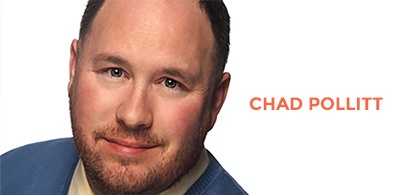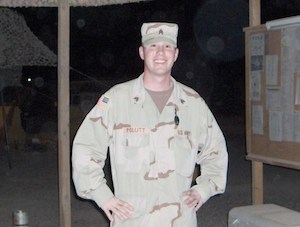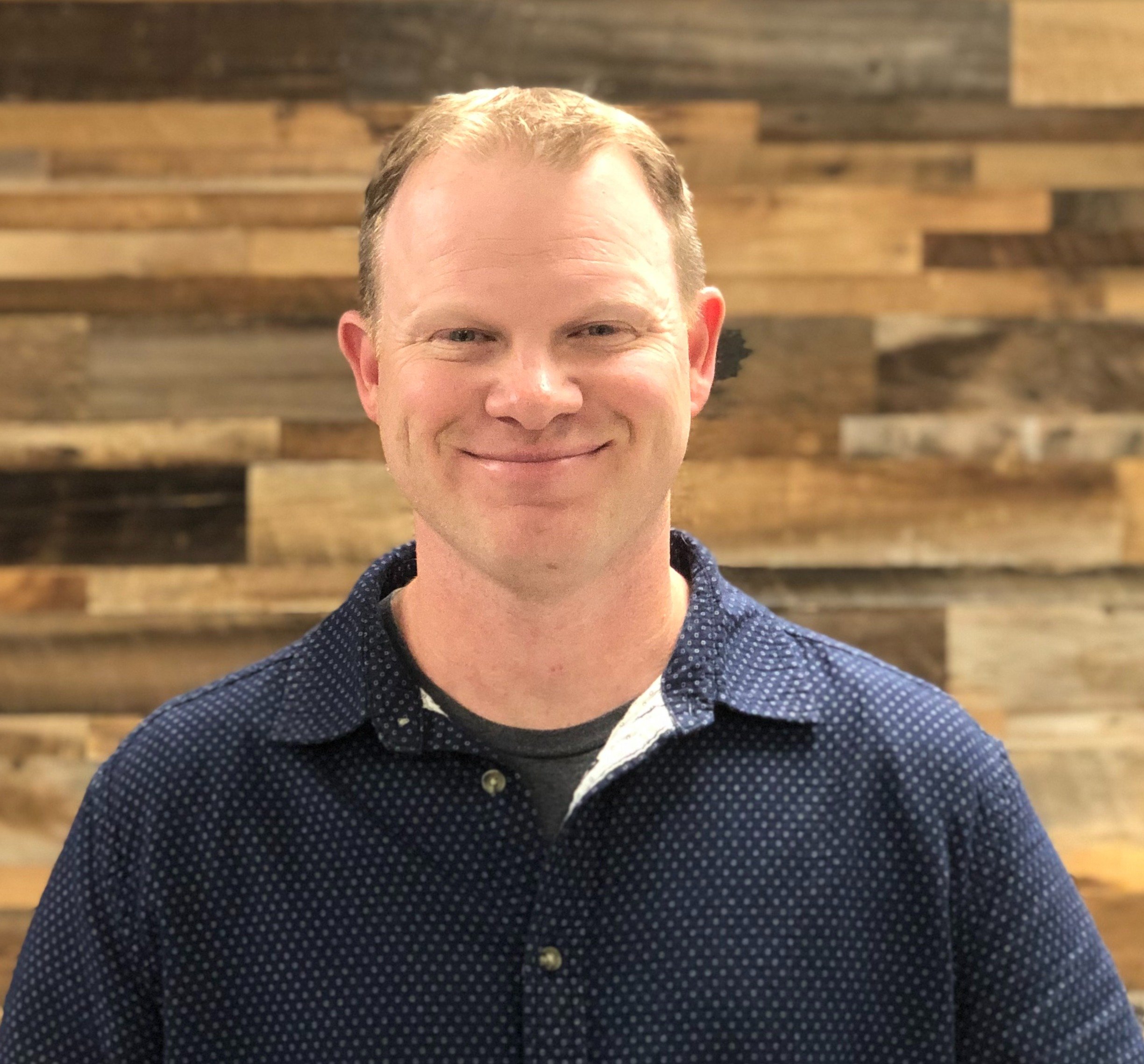 Most marketers understand the link between content marketing and branding, and the power it holds in regard to staying competitive and boosting your product or service. With the right mix of content marketing strategies, businesses will experience more traffic, engagement, lead generation and sales. Nobody understands this more than Chad Pollitt, VP of Audience and Co-founder of Relevance.com, an online publication dedicated to helping marketing and communications executives solve their online content visibility challenges.
Most marketers understand the link between content marketing and branding, and the power it holds in regard to staying competitive and boosting your product or service. With the right mix of content marketing strategies, businesses will experience more traffic, engagement, lead generation and sales. Nobody understands this more than Chad Pollitt, VP of Audience and Co-founder of Relevance.com, an online publication dedicated to helping marketing and communications executives solve their online content visibility challenges.
As a decorated veteran of Operation Iraqi Freedom and former Army Commander, Chad has an incredibly interesting story to tell about his transition into sales, marketing and his current role with Relevance. I had the pleasure of asking Chad a few questions before we hear his keynote talks at the upcoming Experience Inbound 2015. I think you’ll enjoy some of Chad’s unexpected responses, as well as appreciate his openness to sharing a bit about his worst moment in marketing and sales.
Q: With technology changing rapidly from day to day, what do you find to currently be the biggest challenge marketers face with online content visibility?
A: The biggest challenge for marketers regarding online content visibility is two-fold. First, the two major channels of content visibility on the web are becoming overly crowded with content. Those channels include organic search and social. Historically, brands have taken advantage of those channels by relying almost solely on owned media (publish and pray). In a world where those channels are bursting at the seams with brand content, the likelihood of content visibility driving returns on those channels is greatly diminished.
Lastly, too many marketers are relying solely on the traditional marketing stack technologies to drive content visibility. The traditional marketing stack consists of tools for content broadcasting, publishing, listening and measurement. They do not include tools for earning media or turnkey methods for using native advertising at scale. Because of this, late majority brands leveraging the traditional marketing stack only, while producing content in highly competitive verticals, will struggle to drive any meaningful online visibility.
Q: What are the 3 most important and relevant things marketers can do to overcome these challenges?
A: Research, networking and promotion. Late majority content marketing adopters in crowded verticals will struggle with visibility against entrenched brands unless they learn to develop competitive advantages through prudent research, networking and promotion. Researching media, trends, competition and audiences is critical for producing and promoting impactful, prudent content that gets cited and evangelized in front of the right audiences for driving ROI. In addition, marketers need to develop real relationships with their industry’s audience gatekeepers. These are the folks that write for and run trade publications and blogs. In some cases they are well known thought leaders. In others, they are not. Either way, good old fashion relationships can lead to all sorts of audience access.
Q: Tell us a little about your worst and best moments in your experience helping marketing and communications executives.
A: Let’s start with the worst because I like telling this story. Early on in my career I mostly worked with SMBs. One of which was a local security and private investigation company. As with most SMBs, I was working directly with the owner. I not only managed the execution of the campaign, but the sale of it, too. Through the sales process she asked me some pretty neutral personal questions like, “where’d you go to high school” and “did your Mother go there, too.” This was quickly followed up with, “when did she go there” and “I went to school with your mother.” Then she hit me with, “what was her maiden name.” After I answered her the dozen or so previous questions asked rushed through my head and I realized she had all of the information about me she needed to do a full on background check! I immediately called her out on what I perceived she did and she apologized and said she couldn’t help it, it was in her blood. The deal was ultimately closed and executed to their satisfaction, but I never did fully trust that client. The moral of this story is simply – some people have a hidden agenda so be careful.
The best moment is still from my very first SEO client ever. Back in 2007, I closed a small SEO project with a regional trucking company that for all intents and purposes didn’t exist in the search engines. I did my keyword research, executed on page SEO and built several dozen backlinks. From that point I kicked back and watched the organic search traffic pour in. Six weeks later the owner of the company invited me out to dinner. Of course I accepted and while we were sitting there having dinner he told me he just closed a $10 million deal from someone typing in keyword phrase X into Yahoo. His small $3,000 investment netted him incredible returns almost instantly.
Q: What has been your biggest “ah-ha!” moment in the past year?
A: My biggest “ah-ha” moment was in the planning stages of our digital magazine, Relevance. Prior to launch I consulted with several well-known marketing thought leaders who all thought that launching a digital magazine in our space was unlikely to succeed. Why? Because of the thousands of online competitors. How would Relevance stand out from the crowd? Strategically, we took a gamble and bet all of our chips on owning the niche of content promotion, which we believed would separate us enough to pilferage audience away from the more established industry websites. At the time it was clear that content promotion was the biggest problem solver for most content marketers. Embracing the niche and espousing its values in our own marketing efforts was truly an “ah-ha” moment for us and proved the though leaders wrong.
Q: In your most recent book, The Content Promotion Manifesto, you say that if “2013 was the year of content marketing, 2014 shaped up to be the year of content promotion.” What have been some of the most relevant tools, networks and techniques to help marketers with content promotion?
A: Last year was incredibly good for much of the technology in the content promotion ecosystem. Influencer marketing solutions like Buzzsumo, Viralheat, Meltwater and GroupHigh all saw adoption growth. Advocacy software platforms like Dynamic Signal and Social Chorus became household names. At the same time, sponsored content from major media publications started to earn press coverage and buzz. This pushed sponsored articles into the forefront of the content marketing conversation. In addition, native advertising networks like Taboola, Outbrain and Adblade saw banner years. Google even let slip that its top-secret native content network was in private beta, signaling a new player on the block. Add to that several mergers and acquisitions and the plethora of new technology (like Roost, Keywee and Newslauncher) which launched, and all in all, 2014 was a banner year for content promotion.
Q: For many years, frequency of content production was critical and recently, the pendulum seems to be swinging to the side of greater quality and promotion. How would you weigh these aspects of content marketing?
A: This debate has been raging for at least the last five years. I would argue that “quality content” is never defined by the marketer, but by the people that consume it. A perceived masterpiece that gets seen by only a dozen people is not a masterpiece. To determine if content is quality or not requires a robust feedback loop. Mediocre problem solving content with excellent promotion that is consumed and engaged with is much more valuable than a perceived masterpiece that nobody knows exists.
I could rattle off a half-dozen popular blogs in our industry alone right now that publishes flimsy content every day and gets gobs of traffic, engagement and conversions. It’s not because of their publishing frequency, the quality of their content or their prowess for promotion that delivers success for them. It’s the fact that they built an audience last decade when content in our industry was sparse and maintain the trust and admiration of that audience today. The late majority in our industry that figure out ways (earned and paid) to get in front of that audience have the opportunity to hijack it while simultaneously developing the feedback loop required for determining “quality” content. In other words, audience is truly king and content promotion is queen, but she wears the pants.
Q: Tell us a little about your role at Relevance.com and what are some of the site’s greatest benefits as a resource for content marketers?
A: Relevance is a relatively small digital magazine that focuses its attention on content strategy, promotion and marketing. We only have two employees that run the whole show. Myself and Danielle, our Content Coordinator. Over the last year we’ve been able to recruit over 200 contributors, 55,000 subscribers and drive nearly $50k of sponsorships in the first quarter. My role with the publication is pretty complicated. I serve as a contributing writer, resident thought leader, sales person, marketer, figure head, executive editor, media and events coordinator, trainer, CTO and probably titles I don’t know even exist.
We pride ourselves in producing and publishing content outside the echo chamber of marketing and communications. You won’t find your basic how-to top 10 lists that you’ll find on over half the agency blogs out there. Rather, marketing and communications professionals should expect real content strategy, research, promotion and marketing insight that challenges the status quo and truly helps improve campaign ROI.
Q: Having a big enough “why” oftentimes leads people to make the choices they do in their personal and professional lives. What was your big “why” that lead you to join Operation Iraqi Freedom and become an Army Commander?
A: I’ve always gravitated to being a part of and a leader in a cause bigger than myself. Whether in high school, college or as a citizen. That’s the big “why.” However, the true tipping point for me was simply 911. After the events of that day unfolded I told myself, “I’m not getting any younger – now is a better time than any.”
 Q: How did that experience guide you and prepare you for where you are today?
Q: How did that experience guide you and prepare you for where you are today?
A: The lessons learned from 10 and a half years of Army service have made me the business professional I am today and taught me the value of “embracing the suck” as a mindset. No matter how difficult things seem to be in life and in business, they all pale in comparison to the experiences I had in the military. I approach business with the same mission-mindset I approached military operations with. It seems to be working well so far.
Chad Pollitt will be keynoting Experience Inbound 2015 taking place in Milwaukee on June 3 and Green Bay on June 4. Chad will be alongside fellow keynote presenter Mark Roberge, Chief Revenue Officer of Hubspot, as well as many other dynamic sales and marketing presenters. For more information about Experience Inbound or to register, visit www.experienceinbound.com.





